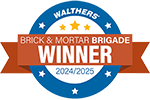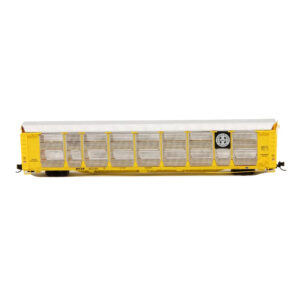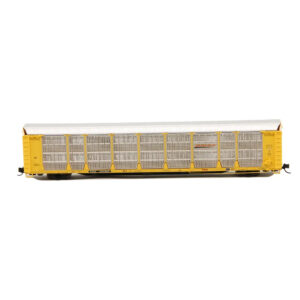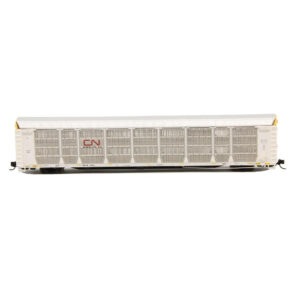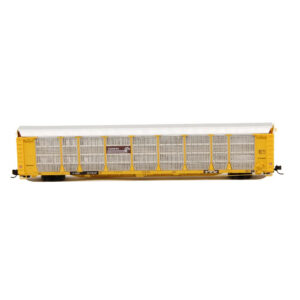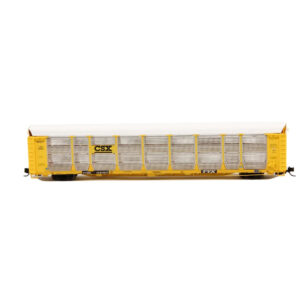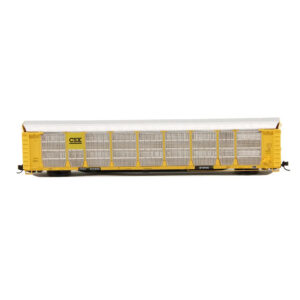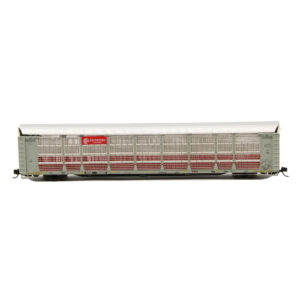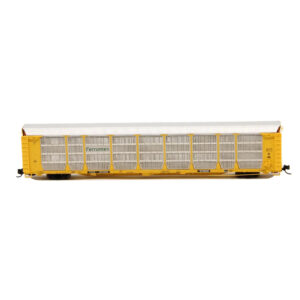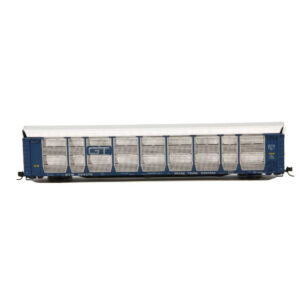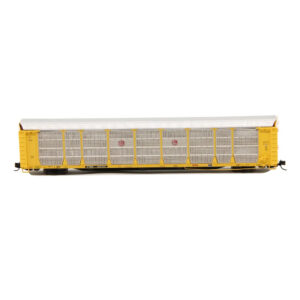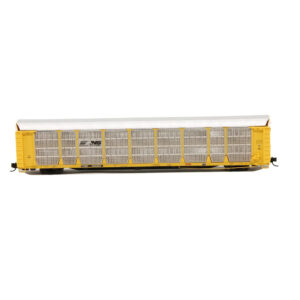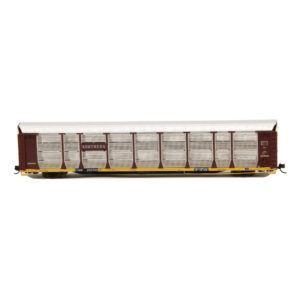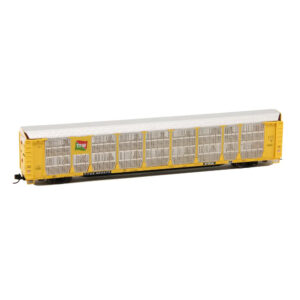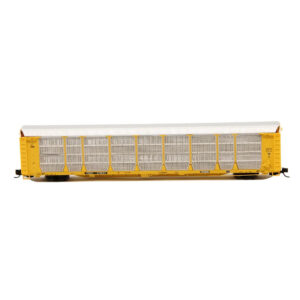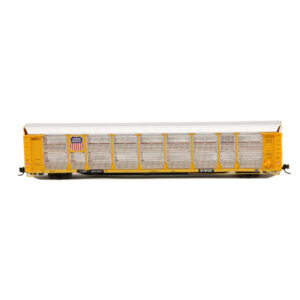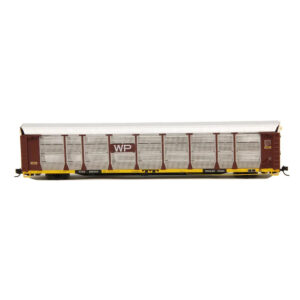Bi-Level Auto Rack
Prototype Information
Railroads introduced the 89-foot bi-level enclosed autorack in the 1970s to handle the growing demand for moving larger automobiles like station wagons, vans, pickups, and later SUVs. Built on the standard 89-foot flatcar, the bi-level design used two decks instead of three, giving taller vehicles the clearance they needed while still protecting them with steel sides, a roof, and lockable end doors.
TTX and major freight car builders supplied the racks, with the flatcar usually painted TTX yellow and the racks wearing the colors and logos of owning railroads. By the late 1970s and 1980s, bi-level enclosed racks joined tri-levels in dedicated auto trains, giving railroads flexibility to load both standard cars and larger vehicles efficiently.
The bi-level enclosed autorack became increasingly important in the 1990s and 2000s as SUVs and pickups dominated the auto market. Today, long cuts of 89-foot bi-levels remain a backbone of rail auto transport across North America.
Showing all 24 results
-
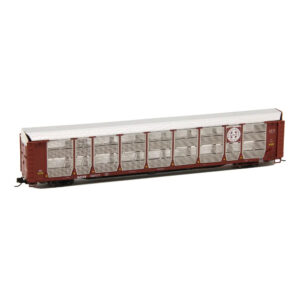
Intermountain N Scale America Model Trains Bi-Level Auto Rack BNSF
$56.00 Select options This product has multiple variants. The options may be chosen on the product page -

Intermountain N Scale America Model Trains Bi-Level Auto Rack BNSF “Black & White Logo”
$56.00 Select options This product has multiple variants. The options may be chosen on the product page -

Intermountain N Scale America Model Trains Bi-Level Auto Rack BNSF “Wedge”
$56.00 Select options This product has multiple variants. The options may be chosen on the product page -

Intermountain N Scale America Model Trains Bi-Level Auto Rack Canadian National
$56.00 Select options This product has multiple variants. The options may be chosen on the product page -

Intermountain N Scale America Model Trains Bi-Level Auto Rack Canadian National “White, NKCR”
$56.00 Select options This product has multiple variants. The options may be chosen on the product page -

Intermountain N Scale America Model Trains Bi-Level Auto Rack Canadian Pacific
$56.00 Select options This product has multiple variants. The options may be chosen on the product page -

Intermountain N Scale America Model Trains Bi-Level Auto Rack Canadian Pacific “Red Panel”
$56.00 Select options This product has multiple variants. The options may be chosen on the product page -

Intermountain N Scale America Model Trains Bi-Level Auto Rack Conrail
$56.00 Select options This product has multiple variants. The options may be chosen on the product page -

Intermountain N Scale America Model Trains Bi-Level Auto Rack Conrail “Yellow Rack”
$56.00 Select options This product has multiple variants. The options may be chosen on the product page -

Intermountain N Scale America Model Trains Bi-Level Auto Rack CSX
$56.00 Select options This product has multiple variants. The options may be chosen on the product page -

Intermountain N Scale America Model Trains Bi-Level Auto Rack CSX “Patch”
$56.00 Select options This product has multiple variants. The options may be chosen on the product page -

Intermountain N Scale America Model Trains Bi-Level Auto Rack Ferromex
$56.00 Select options This product has multiple variants. The options may be chosen on the product page -

Intermountain N Scale America Model Trains Bi-Level Auto Rack Ferromex “Yellow”
$56.00 Select options This product has multiple variants. The options may be chosen on the product page -

Intermountain N Scale America Model Trains Bi-Level Auto Rack Grand Trunk
$56.00 Select options This product has multiple variants. The options may be chosen on the product page -

Intermountain N Scale America Model Trains Bi-Level Auto Rack Kansas City Southern “Dual Logo”
$56.00 Select options This product has multiple variants. The options may be chosen on the product page -

Intermountain N Scale America Model Trains Bi-Level Auto Rack Norfolk Southern “Horsehead”
$56.00 Select options This product has multiple variants. The options may be chosen on the product page -

Intermountain N Scale America Model Trains Bi-Level Auto Rack Providence & Worcester
$56.00 Select options This product has multiple variants. The options may be chosen on the product page -

Intermountain N Scale America Model Trains Bi-Level Auto Rack Southern
$56.00 Select options This product has multiple variants. The options may be chosen on the product page -

Intermountain N Scale America Model Trains Bi-Level Auto Rack Southern Pacific “Speed Lettering”
$56.00 Select options This product has multiple variants. The options may be chosen on the product page -

Intermountain N Scale America Model Trains Bi-Level Auto Rack TFM
$56.00 Select options This product has multiple variants. The options may be chosen on the product page -

Intermountain N Scale America Model Trains Bi-Level Auto Rack TINX
$56.00 Select options This product has multiple variants. The options may be chosen on the product page -

Intermountain N Scale America Model Trains Bi-Level Auto Rack Union Pacific
$56.00 Select options This product has multiple variants. The options may be chosen on the product page -

Intermountain N Scale America Model Trains Bi-Level Auto Rack Union Pacific “Building America”
$56.00 Select options This product has multiple variants. The options may be chosen on the product page -

Intermountain N Scale America Model Trains Bi-Level Auto Rack Western Pacific
$56.00 Select options This product has multiple variants. The options may be chosen on the product page

